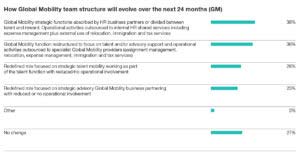Global Mobility Trends in Asia | Part one
Global Mobility trends in Asia | Part one: The role of HR/Global Mobility professionals
This is the first in a three-part series, focused on Global Mobility in Asia. We will share insights on the main trends we see, and future developments we anticipate will shape the future of mobility in this dynamic and diverse Asia region.
Our world is changing, the way we do business is changing, the way we interact with one another is changing. Globalisation is a universally recognised situation, yet it is crucial to be mindful of regional and local trends. When it comes to mobility and the role of HR/Global mobility teams play in the overall business strategy, a large majority of businesses see the function as a key element — enabling and supporting their business strategy.
Santa Fe Relocation’s research report ‘Global Mobility Survey 2019: REVISION – mobility through the looking glass’, clearly shows companies are planning to change the way they are structured to best support their employees, in line with the organisation’s mid and long-term goals. Businesses are increasingly looking for their HR and Global Mobility function to be a business partner rather than an internal vendor manager, and thus are outsourcing transactional and operational activities. As a result, leaders are getting meaningful analytics that drive insights and business outcomes more easily than ever before.

The above data makes the case for increased alignment across regions. as we can see the data for Asia is very consistent to the rest of the world.
In line with this growing alignment across regions, employers and organisations’ leaders need a global overview and control over a consistent mobility programme, which is done via centralising the approach. However, the Asia market is quite unique in its diversity. Global HR and mobility teams often need to empower their countries and business units on some elements of the decision-making process – that is mostly triggered by complex and diverse local markets. Asian-based companies often manage fast paced expansion strategies across various sectors, balanced with the increasing need to remain compliant and adhere to local laws and practices. The implication is that HR teams need to rely on local experts to support and often they decide to benefit from co-source their mobility programmes through relocation management vendors in order to bring together insight about their programme whilst supporting local decision making in-market.
The following post of this mini-series will focus on the immigration constraints and strategies.
Related resources:
Santa Fe Relocation Global Mobility Survey 2019; REVISION: Mobility through the looking glass – a survey of 703 global mobility professionals, 53 business leaders and interviews with Global HR Directors between January and February 2019

